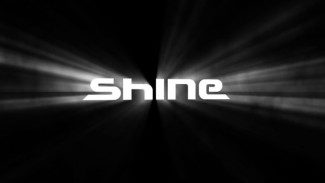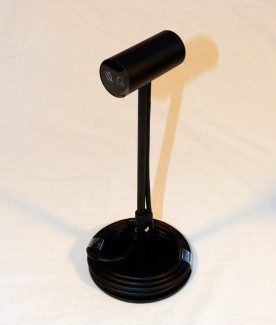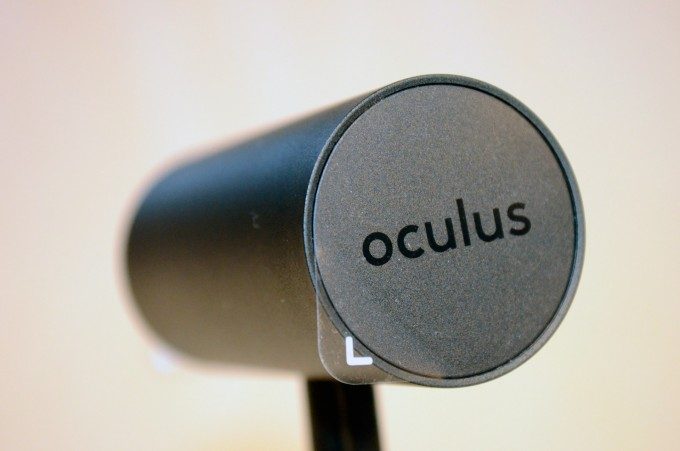Table of Contents
Specs & Performance
Tech Specs
Officially, Oculus offers up the following specs for the consumer Rift:
- Resolution: 1200×1080 (per eye)
- Field of View (FoV): 100 Degrees
- Display refresh rate: 90Hz
- Lens spacing adjustment (IPD): 58-72mm
- Weight: 360 grams (0.8 pounds)
- Headset cable: 4 meters
- Sensor cable: 2.5 meters
Field of View
Although Oculus said that the Rift DK2 also had a 100 degree field of view, the consumer Rift’s field of view certainly feels larger. FoV measurements can be tricky to nail down because it can vary greatly depending upon how close you can get the lenses to your eyes (which is informed by your facial structure). Even without a lens-to-eye distance adjustment (like the DK2 had), for me, the field of view still feels largest on the consumer Rift, but it certainly isn’t a huge increase.
Display & Screen Door Effect
The consumer Rift’s display is a huge step up over the company’s prior headsets. It isn’t yet retinal quality (it’ll be a long time before we achieve that), but it’s more than adequate. The infamous ‘screen door effect’ is very minimal and fades greatly from notice once you are focusing on content inside the Rift.
In the days of the DK1, almost every person who I’ve ever seen try the headset for the first time made some comment about the resolution being too low. With the DK2, the percentage of people who said something about resolution on their first try dropped, but it was still a significant number. With the consumer Rift, I’ve yet to hear any new user specifically call out the resolution as being inadequate. We’ll definitely want to continue to drive resolution up from here, but 1200×1080 per eye is a very solid starting point for consumer VR.
What I’ve been calling the ‘light ray artifact’ is a glaring fault in an otherwise impressive display and optics system. This artifact can be seen obnoxiously wherever there are high contrast elements in the scene (especially white text on a black background). When you move your head, the light rays move with you, like a lens flare on a panning camera, calling even more attention to them.

To my knowledge, the light ray artifact is caused by the Rift’s Fresnel lenses, which causes light to scatter because of the ridges. For the record, this artifact is an issue for all headsets that I’ve seen using Fresnel lenses (which includes the HTC Vive), and is not unique to the Rift.
Curiously enough, the light ray artifact can be avoided quite effectively if developers do their best to avoid high contrast scene elements. In fact, where there isn’t high contrast happening in the scene, you are unlikely to see or notice the light rays at all. And yet for some reason I continue to see lots of developers putting white text on black backgrounds, drawing full attention to this flaw.
Having said that, I think that the elimination of this artifact will be one of the top pieces of customer feedback, on par with the desire for higher resolution.
Tracking
The ‘Constellation’ tracking works flawlessly, and feels even better at 90Hz compared to the 75Hz of the Rift DK2. The consumer Rift now also features tracking points on the back of the headset which allows for 360 degree tracking which worked seamlessly for me throughout my testing, even when explicitly attempting to foil the sensor by having my head turned 90 degrees to it where the tracking system should be most prone to failure.
 We will soon be further testing of the bounds of the Sensor, but, anecdotally, it feels like the field of view is much wider than the DK2 Sensor (which was already pretty wide). Roughly I would guess the Sensor’s field of view to be 120 degrees.
We will soon be further testing of the bounds of the Sensor, but, anecdotally, it feels like the field of view is much wider than the DK2 Sensor (which was already pretty wide). Roughly I would guess the Sensor’s field of view to be 120 degrees.








